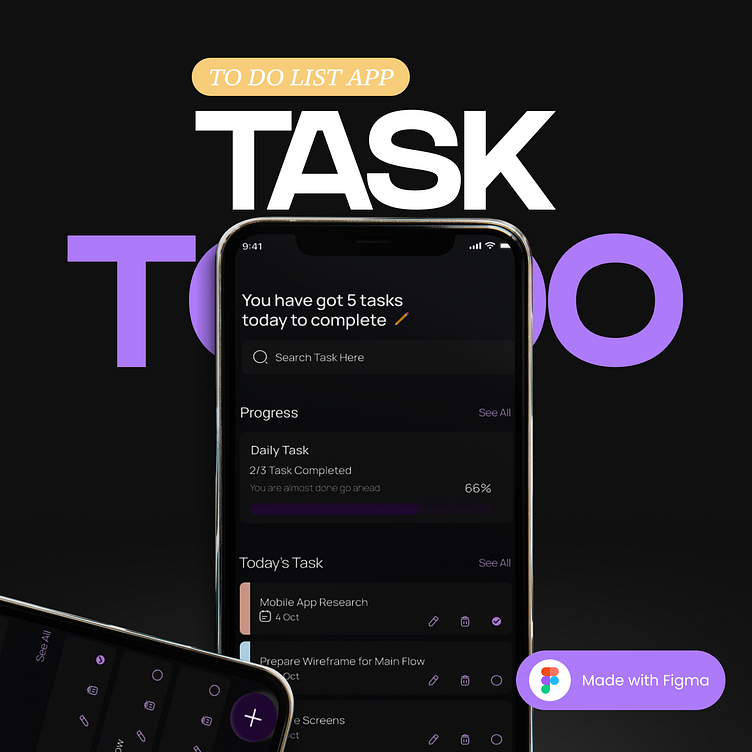TO DO LIST APP
Case Study: UI/UX Design for a To-Do List App
Overview:
As a UI/UX designer, I was tasked with designing a user-friendly and intuitive to-do list application for both web and mobile platforms. The goal was to create an efficient task management tool that enhances productivity and organization for users.
Research Phase:
1. User Interviews: Conducted interviews with potential users to understand their task management habits, pain points, and feature preferences.
2. Competitive Analysis: Researched existing to-do list apps to identify common UI patterns, features, and areas for improvement.
3. User Persona Development: Created user personas based on research findings to represent different user segments and their needs.
Design Phase:
1. Wireframing: Developed low-fidelity wireframes to outline the app's structure, layout, and key functionalities. This helped visualize the user flow and ensure a logical navigation experience.
2. Prototyping: Created interactive prototypes using tools like Figma or Adobe XD to simulate the app's functionality and gather feedback from stakeholders.
3. Visual Design: Designed the app's visual elements, including color scheme, typography, icons, and imagery, to align with the brand identity and create a cohesive user interface.
4. Responsive Design: Ensured the app's design is responsive and adaptable to various screen sizes and devices for a seamless user experience.
Key Features:
1. Task Creation: Users can easily add, edit, and delete tasks with intuitive input fields and options for setting due dates, priorities, and categories.
2. Task Organization: Implemented features for organizing tasks into lists, folders, or tags to help users categorize and manage their tasks effectively.
3. Reminders and Notifications: Integrated reminders and notifications to alert users of upcoming deadlines or overdue tasks, improving task visibility and timely completion.
4. Collaboration: Enabled collaboration features such as task sharing, assigning tasks to team members, and real-time updates to support teamwork and project management.
5. Customization: Provided options for users to customize the app's interface, including themes, layout preferences, and personalization settings.
Testing Phase:
1. Usability Testing: Conducted usability tests with real users to evaluate the app's usability, identify pain points, and gather feedback for iterative improvements.
2. Bug Fixing: Addressed any bugs, glitches, or inconsistencies discovered during testing to ensure a smooth and error-free user experience.
3. Accessibility Compliance: Ensured the app meets accessibility standards, including support for screen readers, keyboard navigation, and color contrast ratios, to accommodate users with disabilities.
Launch and Iteration:
1. Deployment: Launched the to-do list app on web and mobile app stores, making it accessible to users across different platforms.
2. Feedback Collection: Continued gathering user feedback and monitoring app performance post-launch to inform future updates and iterations.
3. Iterative Design: Implemented iterative design cycles to refine and enhance the app based on user feedback, usability testing results, and emerging design trends.
Conclusion:
Through a user-centered design approach and iterative development process, the to-do list app successfully addresses user needs, enhances productivity, and delivers a seamless task management experience across web and mobile platforms. Continuous iteration and user feedback will drive further improvements and ensure the app remains relevant and valuable to its users.
